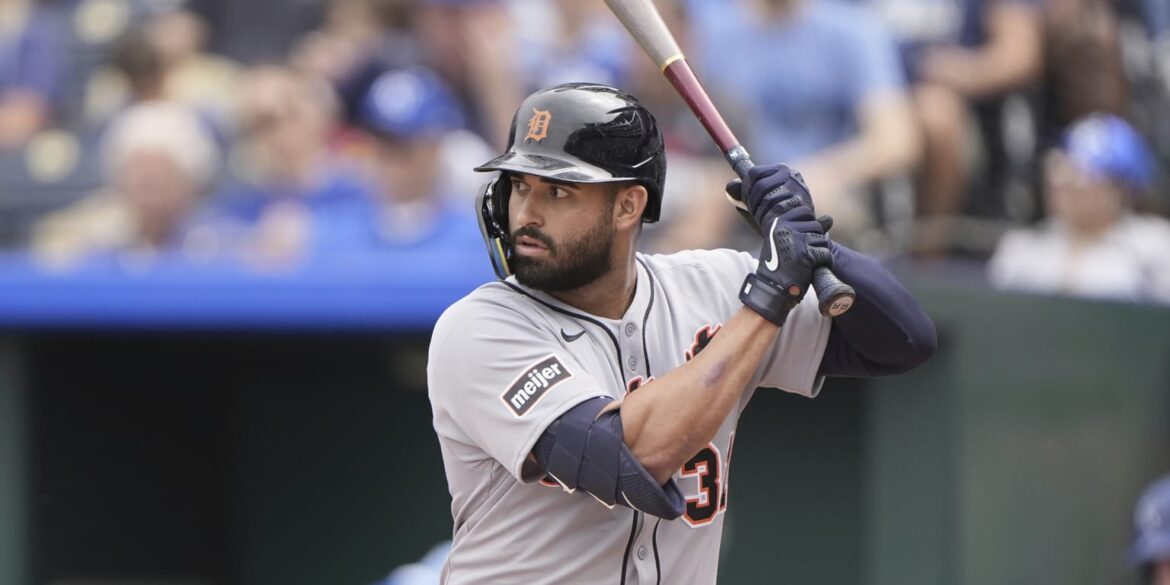DETROIT — Riley Greene is the first Tigers hitter to earn back-to-back All-Star selections since Miguel Cabrera, and the first Tigers position player to start in a Midsummer Classic since Cabrera in 2014.
Greene had the highest combination of home runs and RBIs by a Tiger in a season since Miggy’s second MVP season in 2013. And he did it all in his age-24 season.
So why does it feel like his 2025 season was a mixed bag?
It’s complicated. It’s about strikeouts and Greene’s single-season Tigers record (201, also the most in the American League in ’25), for sure, but there’s more than that. And as the Tigers head into an offseason with questions to address, Greene’s situation lurks in the background.
This is Greene’s team, certainly on the positional side. Even if the Tigers make a splash this offseason by adding a big-name free agent or two or swinging a trade for veteran help, this will be Greene’s team. He’s a homegrown player, the best hitter to come out of the Tigers’ system and play for Detroit since Curtis Granderson 20 years ago. He’s a tireless worker who lays it on the line for his team, whether beating up his body on diving catches or playing through injuries.
Greene’s breakout had been anticipated ever since the summer of 2019, when the just-drafted teenager put on such a show in batting practice at Comerica Park that Cabrera half-kiddingly begged team officials to keep him there. Greene arrived soon enough, but he needed a combination of good health and development to put together the kind of full-season production that left fans saying they knew he could do it.
That production came at a price. To get to big-time numbers, he needed to take advantage of more opportunities. He ended up swinging more — a lot more. His 8.3 percent jump in swing rate was easily the biggest of any hitter in the Majors this year; just three other MLB hitters had even a five percent increase. Many of those extra swings came on pitches over the plate; he had an MLB-high 7.3 percent rise in his swing rate on pitches in the zone. But his 8.1 percent rise in chase rate was second only to Milwaukee’s Joey Ortiz among big league hitters. He went from Statcast’s 85th percentile in chase in 2024 to the 29th percentile this year.
“I think the topic of strikeouts is league-wide,” manager A.J. Hinch said at the Tigers’ end-of-season media session. “Pitchers are chasing them. Hitters, they don’t like them, but … I always joke with guys, ‘You might not dislike them enough. … It can be an empty out, but you want your guys to take their A-swing as much as possible. So if there is a give and take.”
While Greene’s swing rates were way up across the board, his whiff rates didn’t climb quite so dramatically. But that doesn’t mean his extra swings were always productive. His career-high .493 slugging percentage was actually some hard luck compared to his .516 expected slugging percentage, a rate that put him in the top 10 percent of MLB hitters this year according to Statcast. Similarly, his barrel rate was in the top five percent. Yet his average exit velocity actually fell from 91.3 mph in 2024 to 89.9 mph in 2025, the 13th-largest year-to-year drop from ’24 to ’25. His hard-hit rate dropped from 47.1% (83rd percentile) to 45.5% (61st percentile), still good but his lowest rate since his rookie season in 2022.
After years of looking to elevate the ball more often, he did an outstanding job of pulling the ball in the air. But much of that improvement in pull rate came at the expense of centering drives; his opposite-field rate actually went up.
Bat tracking shows a similar story. Greene increased his average bat speed to a career-high 75.6 mph (92nd percentile) and his fast-swing rate (swings over 75 mph) to 57.2 percent, both career highs. Yet his rate of “squared-up” swings fell from 30.8 percent in 2024 to 24.6 percent this year.
In some ways, Greene became a volume hitter, producing more damage with more total swings rather than more efficiency.
“With Riley, I’ve talked to him about his approach,” Hinch said. “I’ve talked to him about his thought process. When you’re in the middle of the fight and guys are throwing 98 to 104 now, you can’t be in the box and mentally defensive about strikeouts. What you can do is have Plan A and Plan B, and have to adapt accordingly to the game. What never changes is you have to swing at the right pitches.”
By that, Hinch means pitch location as much as pitch type.
“I think we can concede certain parts of the competition, but not overall power. Nobody wants Riley to hit for less power,” Hinch continued. “We want them to continue to nudge progress in swinging at the right pitches that they can do damage on. And then, when the game suggests [an adjustment] — you don’t feel right, you’re not picking up the ball, you can’t see it, Gavin Williams’ breaking ball is super nasty — all those things are going to tell you that you need a Plan B at some point during your approach. Easier said than done.”
With Greene approaching another healthy offseason, expect plenty of swings with his longtime hitting instructor, Jered Goodwin. Against that backdrop, Greene is eligible for salary arbitration for the first time. If the Tigers are going to pursue a long-term extension, the first offseason or two of arbitration is often the window.
Greene addressed one major question this year by staying healthy and playing a full season for the first time in his career, racking up 165 games between the regular season and playoffs. Hitting for power answered another question. His next evolution as a hitter could be equally big.
